Broccoli: Grow & Care for Broccoli
Written by Iris
Nov 08 2021

Broccoli belongs to the Brassica oleracea family, which includes cabbage, Brussels sprouts, cauliflower, collards, collards and kohlrabi. Broccoli is a hardy vegetable that grows best during the cooler months of the year. Most areas can grow two crops per year (spring and fall), especially as rapid ripening and increased heat tolerance extend broccoli's lifespan to the hottest part of a season.
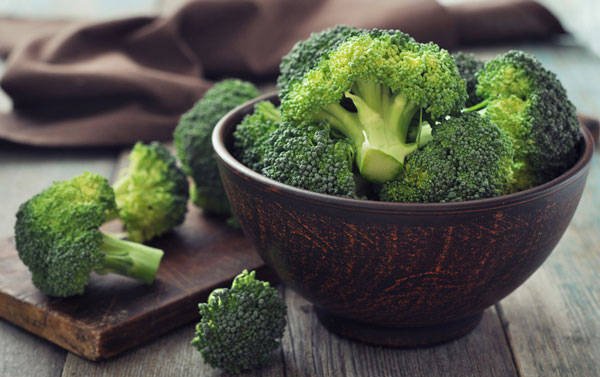
For spring plantings, broccoli may be started indoors or outdoors a few weeks ahead of your last spring frost date.
Start seeds indoors 6 to 8 weeks before your last frost date.
Sow seeds outdoors 2 to 3 weeks before your last frost date, or as soon as the soil can be worked in the spring.
For fall plantings (best in warm climates), sow seeds outdoors 85 to 100 days before the first fall frost, when soil and ambient temperatures are high.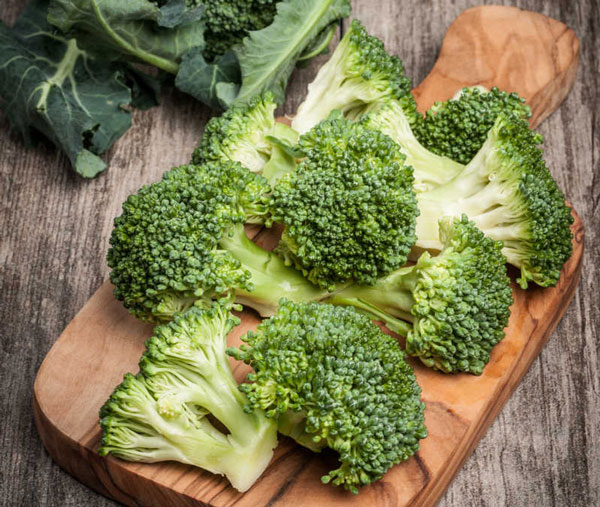
After germination, thin out the seedlings, removing the smaller or weaker one to leave one per module.
Apply a general purpose liquid feed every week.
When the young plants are 10–15cm (4–6in) tall with a good rootball, plant them outside into fertile soil in sun or very light shade.
Space plants 30cm (1ft) apart, with 45cm (18in) between rows. Closer spacing will reduce the number of sideshoots, leading to a smaller crop.
When the seedlings are large enough to be handled, thin out each ‘station’, leaving one healthy seedling every 30cm (1ft).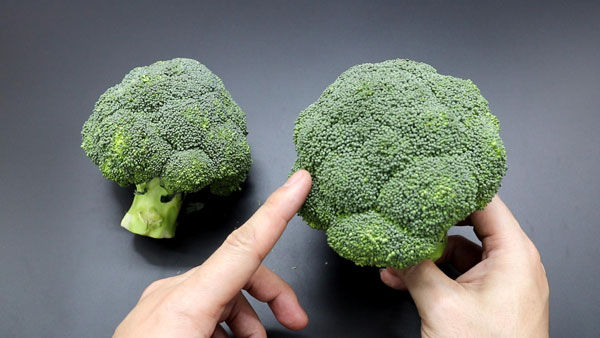
Broccoli is susceptible to cabbage family diseases including yellows, clubroot, and downy mildew. Plant disease-resistant varieties, rotate crops each year, and keep the garden free of debris to cut back the incidence of disease. Remove and destroy infected plants immediately.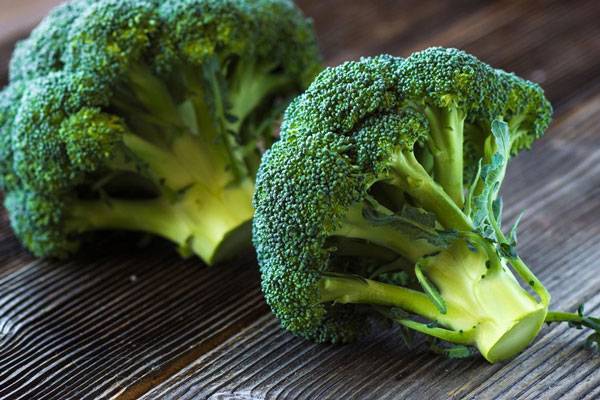
You'll know that your crops are ready for the first harvest when heads have formed, and they've reached a diameter within the range of what's indicated for the cultivar that you're growing, usually around four to seven inches across.
Check your seed packets for this information, as well as the average number of days to maturity, a period that varies widely, from 50 to 100 days. This is another helpful guideline to keep in mind.
When florets on the outside edge of the head are large and full, this is another useful indicator that you're good to go.
But don't wait too long. When they begin to turn from green to yellow, this is a sign that they’re beginning to flower, and past their peak.
If you notice this change taking place, your crops are still good to eat. In fact, the flowers are edible.
To harvest, use a sharp, clean knife to make a cut about five to six inches below the mature head. Try to do this cleanly, and without pulling, to avoid damaging the roots and remainder of the plant.
After picking, most cultivars will continue to develop smaller side shoots with florets that are also good to harvest. Add a little nitrogen-rich fertilizer to encourage their growth. These side shoots will be in plentiful supply for as long as you keep cutting them. Once you stop, expect the plant to flower, run to seed, and die. A bout of sudden heat may produce the same results.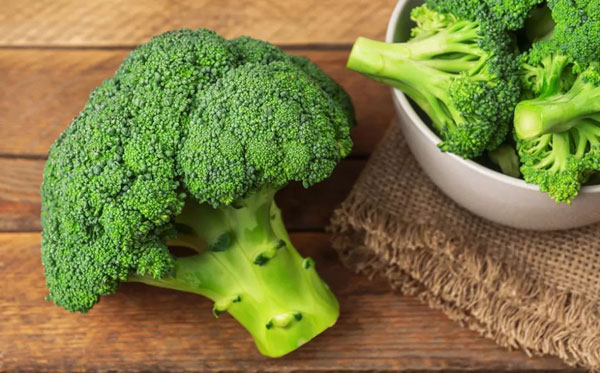
Here's how:
Moisten a large linen dish towel or two to three paper towels.
Wrap the unwashed head in the paper towels. Place it in the low-humidity crisper bin of the refrigerator.
Check for brown or black discoloration, and/or sliminess that may indicate the presence of mold. Don’t consume any affected portions.
You can also freeze broccoli. To do so:
Place washed individual florets in boiling water for about three minutes, a process called blanching.
Plunge the florets into a bowl of cold water for five minutes.
Lay the florets in a single layer on clean linen dish towels or paper towels.
When completely dry, freeze the florets in a single layer on a tray or cookie sheet. When they are frozen, store the florets in zippered plastic bags for up to one year.
And don't forget that those nutritious stems and leaves are edible as well. You can even feed the leaves to your chickens.
Rapini: Also called broccoli raab, this is a closer relative to the turnip. It matures faster and so has fewer potential problems, and it can be harvested a bit at a time through the cool season. It also has a distinct, slightly bitter flavor that works well in Italian and Asian dishes.
Sprouting broccoli and Chinese broccoli, or Gai lan: This variety is valued for their tender stems and leaves, like asparagus, rather than a big head. Ready to harvest in 60-70 days, these may be a little more flexible about temperature and last well into cold weather. Purple versions contain anthocyanins, which are antioxidants attached to the purple pigment. Broccolini is a hybrid of broccoli and Chinese broccoli.
Romanesco: Between broccoli and cauliflower on the brassica family tree, romanesco looks like something from outer space, with its spiral patterns and neon green color. Its slightly nutty, mild taste and nubby consistency let it beautify a variety of recipes.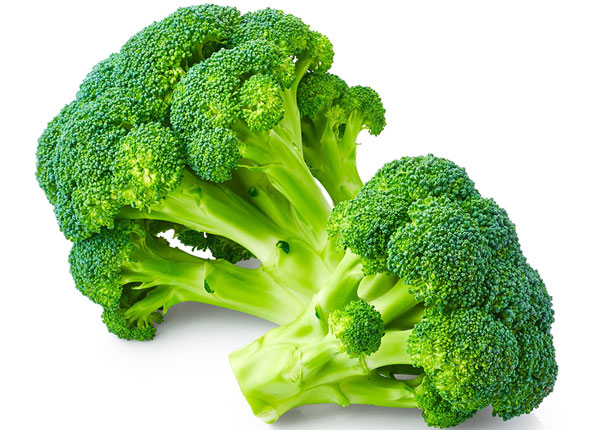
Read Next:
15 Fall Vegetables to Plant for Your Autumn Garden
How to Choose and Prepare a Planting SiteWhen to Grow BroccoliHow to Grow BroccoliSteps for Broccoli Propagation with SeedsHow to Care for BroccoliLightSoilWaterFertilizerPests and DiseasesHarvestingStorageBroccoli VarietiesBroccoli FAQHow Big Do Broccoli Plants Get?How Many Heads of Broccoli Do You Get From One Plant?Can You Eat Broccoli Leaves?
How to Choose and Prepare a Planting Site
Broccoli requires a site with exposure to full sun (6 to 8 hours per day). Lack of sunlight may produce thin, leggy plants and subpar heads. Plant in a bed of moist, fertile soil that drains well. Soil pH should be slightly acidic, between 6.0 and 7.0. To increase fertility before you plant, in early spring, work in 2 to 4 inches of rich compost or a thin layer of manure. (Learn more about soil amendments and preparing soil for planting.)
When to Grow Broccoli
Broccoli is cool-season crop, so it should be started in late winter or early spring (depending on your climate) for an early summer crop, or in mid- to late summer for a fall crop. High temperatures will affect development of the broccoli head (the harvestable part), so the goal is to get broccoli to mature before or after high temperatures are expected. Broccoli seeds are capable of germinating in soil temperatures as low as 40°F (4°C), but warmer soil is preferred and will greatly speed up development.For spring plantings, broccoli may be started indoors or outdoors a few weeks ahead of your last spring frost date.
Start seeds indoors 6 to 8 weeks before your last frost date.
Sow seeds outdoors 2 to 3 weeks before your last frost date, or as soon as the soil can be worked in the spring.
For fall plantings (best in warm climates), sow seeds outdoors 85 to 100 days before the first fall frost, when soil and ambient temperatures are high.

How to Grow Broccoli
Steps for Broccoli Propagation with Seeds
- Sow indoors
After germination, thin out the seedlings, removing the smaller or weaker one to leave one per module.
Apply a general purpose liquid feed every week.
When the young plants are 10–15cm (4–6in) tall with a good rootball, plant them outside into fertile soil in sun or very light shade.
Space plants 30cm (1ft) apart, with 45cm (18in) between rows. Closer spacing will reduce the number of sideshoots, leading to a smaller crop.
- Sow outdoors
When the seedlings are large enough to be handled, thin out each ‘station’, leaving one healthy seedling every 30cm (1ft).

How to Care for Broccoli
Light
Broccoli needs a full day of sunlight, 6-8 hours. Keep in mind, broccoli grows in seasons with shorter days and weaker light.Soil
Choose an area with full sun and well-draining soil, loosening the soil 12-15 inches deep. Then, add a 3-inch layer of compost or garden soil, following label directions. Plant three seeds together 1/2 inch deep every 18 inches in rows 36 inches apart. Thin seedlings when they reach 1 inch in height, leaving just the strongest one in each group. Use the same spacing for transplants. If you're planting in the fall, sow seeds in the ground 85-100 days before your first expected fall frost.Water
It's important to know how often to water. Much depends on your area and how dry it is. You should water the broccoli often since they grow best in moist soil. They need one to 1.5 inches of water per week and ensure to water the plants around their base. That is especially important when the broccoli heads are developing since if the heads get wet, they can rot. You can help keep the soil moist and cool by covering the area below the plants with untreated grass clippings or organic mulch.Fertilizer
Broccoli is a heavy feeder, that’s why adding generous amounts of nitrogen rich fertilizer to the broccoli bed before planting is a good idea. Go for well-aged compost or rabbit manure. However, overfertilizing is also dangerous for the broccoli, it can lead to hollow stems.Pests and Diseases
Broccoli can be attacked by cutworms, cabbage loopers (preceded by small yellow and white moths), and imported cabbage worms. Control these pests by handpicking them off of plants or by spraying with Bacillus thuringiensis.Broccoli is susceptible to cabbage family diseases including yellows, clubroot, and downy mildew. Plant disease-resistant varieties, rotate crops each year, and keep the garden free of debris to cut back the incidence of disease. Remove and destroy infected plants immediately.

Harvesting
Figuring out when it's time to harvest can be difficult for first-time growers, especially when it comes to green vegetables. Without a sudden color shift to indicate that it's time to pick.You'll know that your crops are ready for the first harvest when heads have formed, and they've reached a diameter within the range of what's indicated for the cultivar that you're growing, usually around four to seven inches across.
Check your seed packets for this information, as well as the average number of days to maturity, a period that varies widely, from 50 to 100 days. This is another helpful guideline to keep in mind.
When florets on the outside edge of the head are large and full, this is another useful indicator that you're good to go.
But don't wait too long. When they begin to turn from green to yellow, this is a sign that they’re beginning to flower, and past their peak.
If you notice this change taking place, your crops are still good to eat. In fact, the flowers are edible.
To harvest, use a sharp, clean knife to make a cut about five to six inches below the mature head. Try to do this cleanly, and without pulling, to avoid damaging the roots and remainder of the plant.
After picking, most cultivars will continue to develop smaller side shoots with florets that are also good to harvest. Add a little nitrogen-rich fertilizer to encourage their growth. These side shoots will be in plentiful supply for as long as you keep cutting them. Once you stop, expect the plant to flower, run to seed, and die. A bout of sudden heat may produce the same results.

Storage
Broccoli is best consumed the day it's picked. Wash it right before use. You can store a harvested head for about a week.Here's how:
Moisten a large linen dish towel or two to three paper towels.
Wrap the unwashed head in the paper towels. Place it in the low-humidity crisper bin of the refrigerator.
Check for brown or black discoloration, and/or sliminess that may indicate the presence of mold. Don’t consume any affected portions.
You can also freeze broccoli. To do so:
Place washed individual florets in boiling water for about three minutes, a process called blanching.
Plunge the florets into a bowl of cold water for five minutes.
Lay the florets in a single layer on clean linen dish towels or paper towels.
When completely dry, freeze the florets in a single layer on a tray or cookie sheet. When they are frozen, store the florets in zippered plastic bags for up to one year.
And don't forget that those nutritious stems and leaves are edible as well. You can even feed the leaves to your chickens.
Broccoli Varieties
Aside from the well-known, rounded-head broccoli types such as Calabrese that look like kids’ drawings of trees, there are surprising varietals that are catching on.Rapini: Also called broccoli raab, this is a closer relative to the turnip. It matures faster and so has fewer potential problems, and it can be harvested a bit at a time through the cool season. It also has a distinct, slightly bitter flavor that works well in Italian and Asian dishes.
Sprouting broccoli and Chinese broccoli, or Gai lan: This variety is valued for their tender stems and leaves, like asparagus, rather than a big head. Ready to harvest in 60-70 days, these may be a little more flexible about temperature and last well into cold weather. Purple versions contain anthocyanins, which are antioxidants attached to the purple pigment. Broccolini is a hybrid of broccoli and Chinese broccoli.
Romanesco: Between broccoli and cauliflower on the brassica family tree, romanesco looks like something from outer space, with its spiral patterns and neon green color. Its slightly nutty, mild taste and nubby consistency let it beautify a variety of recipes.

Broccoli FAQ
How Big Do Broccoli Plants Get?
Broccoli plants will usually grow to be around two to three feet tall and roughly two to three feet wide. Their size will depend on how far apart you’ve spaced your plants. As with most plants, the more space you give them, the bigger they will get.How Many Heads of Broccoli Do You Get From One Plant?
It will yield one large head per plant. Once harvested, it will produce several smaller side flower heads over the next few weeks.Can You Eat Broccoli Leaves?
Most people think only of the florets. However, you can eat the leaves of a broccoli plant steamed or raw. Eat them in a salad like you would other dark leafy greens. You can pick larger leaves and smaller ones.Read Next:
15 Fall Vegetables to Plant for Your Autumn Garden
Latest Updated
- Benefits of Bugleweed - 7 Science-backed Health Benefits
- Bugleweed Dangers & Side Effects - Is It Poisonous?
- How to Plant Evergreen Trees - What You Should Know
- When to Plant Evergreens - Grow Guide for Evergreen Trees
- 12 Wonderful Evergreen Shrubs for Your Garden
- 12 Popular Evergreen Plants with Pictures for Beginners
- When And How To Prune A Lilac Bush Like a Pro
- How to Grow & Care for Lilac Vine (Hardenbergia Violacea)
- Japanese Lilac Tree (Syringa Reticulata) Care & Propagation Guide
- Shumard Oak Pros and Cons - What to Know
Popular Articles
- Winter maintenance of Antirrhinum Majus
- How to Grow Terminalia Mantaly Tree
- How to Grow and Care for Crossostephium Chinense
- How to grow Antirrhinum Majus in spring
- Peristeria Elata (Dove Orchid) Profile: Info & Care Guide
- Underwatered Snake Plant (Sansevieria Trifasciata) - Signs And How To Fix
- How to Care for Brazilian Jasmine Plant (Mandevilla Sanderi)
- How to Grow & Care for Graptopetalum Purple Delight in Summer
- Rosa Chinensis (China Rose): Plant Growing & Care Tips
- How to Care for Baby Sun Rose (Aptenia Cordifolia)